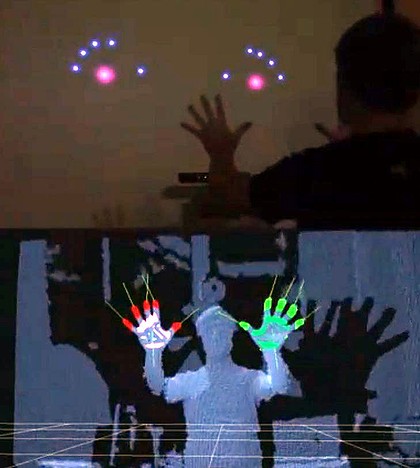The winning team will get a $10,000 prize
The idea is to extend the Kinect’s potential uses from gaming to things like interpreting lipreading and sign language as well as determining whether a hospital patient has suddenly taken a bad turn.
A venture that started in a Bondi flat is helping Microsoft unlock the power of its Kinect gaming gadget so that it could control home automation, read sign language, monitor hospital patients and even enable users to edit movies or play music using just body movements.
Kinect, released last year on the Xbox 360 and later expanded to the PC, allows users of the games console to play games and navigate the Xbox interface using just gestures and voice commands.
In March, after 10 million Kinect sensors had been sold worldwide, Kinect was crowned the fastest-selling consumer electronics device in history by Guinness World Records.
Microsoft has opened up the platform to outside developers who are using it to do much more than play games (and Microsoft is investing in the best third-party apps). This week, Microsoft released an Xbox update allowing Kinect users to control music and films on the console using voice commands such as pause, play, fast forward and stop.
But Microsoft now wants Kinect to be able to quickly and easily learn entirely new gestures, not just preconfigured ones, opening up a plethora of new applications.
To do this it is sponsoring a competition on Kaggle, the Aussie-made “crowd-sourcing for geniuses” website that brings together the world’s best data scientists to solve some of the most intractable problems.
The winning team will get a $10,000 prize but Microsoft has also set aside $200,000 to license the best solution.
Already the site, created by Australian Anthony Goldbloom in a Bondi flat in Sydney, has helped NASA map dark matter and aided health care providers in developing algorithms to predict which patients will get sick.
The site received an $11 million investment from some of the biggest names in Silicon Valley last month and Kaggle has now moved to the US.
Goldbloom said that the reason Kinect was presently limited was because the algorithms that power it aren’t sophisticated enough to distinguish more subtle movements.
The Kaggle competition aims to build algorithms that can make much finer distinctions.
“The idea is to extend the Kinect’s potential uses from gaming to things like interpreting lipreading and sign language as well as determining whether a hospital patient has suddenly taken a bad turn,” said Goldbloom.
Bookmark this page for “Kinect” and check back regularly as these articles update on a very frequent basis. The view is set to “news”. Try clicking on “video” and “2” for more articles.








